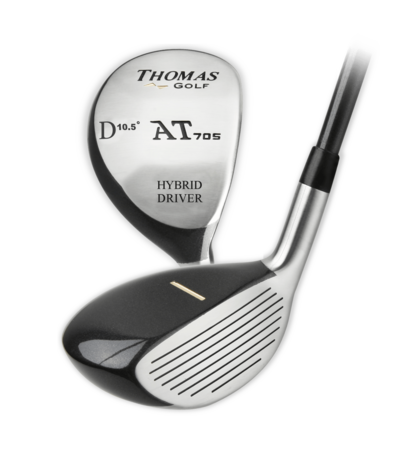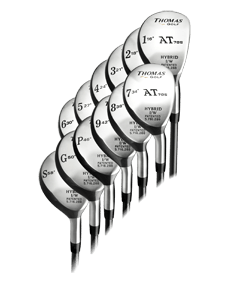In this video tip PGA golf professionals Pete Styles and Matt Fryer will help you to improve your understanding on the role that your hips should play during the golf swing, from setting your hips in the correct position at address, to how your hip should rotate through 45° during the backswing. Matt and Pete discuss how the hips should rotate and lead the downswing turn. This will enable your body to open up correctly ready for impact which in turn should have the hips facing towards the target as the ball is struck. Correct understanding and execution of the hip motion should help result in longer, straighter, more consistent golf shots.
So one of the things that we're going to see on T.V. when watching the golf and especially from these young athletes is tremendous movement at the hips throughout the golf swing. As opposed to some of the guys you may see at your local golf course who have very inflexible and very well and functional hips, and I think it's something that sometimes it gets locked away from we don't hit the golf ball with our hips. So why should we focus on them but if there was a couple of things we could focus on with them I think we're going to hit some better golf shots. I think there's 2 interesting points you already raise there and one is do we know what we should be doing with our hips and the second one is are we capable of doing what we should be doing with our hips and it's not the same hip action has to happen for everybody. You might look at somebody like McIlroy and think well he gets his head's always pointing at the target as he has got his hips opened by almost 80 degrees at the point of impact. So he's there but impact is round here shoulders way open to strike the ball here and interestingly his swing is changing as he gets a little bit older a little bit and you know like flexible. So depending on your degree of flexibility your injury history your hips don't necessarily need to do what the young guys do, but they do need to do something they're there to help you out there to help them get the ball further with better balance and more control. So if we talk through what the hips do from the set up I'm going to address the ball here my hips are going to be square to target.
So they point the same direction as my feet and everything is nicely on line as I lined up my upper body, and a look at a couple of angles upper body I'm going to try and turn to 90. I know my back to target shoulders all the way and and hips should turn less than 45 degrees at that point. Was upper body goes a lot of the hips too much they go but a bit more sometimes not you see that left knee coming in quite a lot as well just because the hips are sliding there aren't they. As opposed to the one now if you were to demonstrate a good hip to what we'd see here from Pete is a lot more tightness in the hip but staying in a box and rotating is opposed to sliding. So we want to avoid this too much simpler not in a coil of power we want to create this term the upper body leave the hips largely where they were about 45 degrees. Excellent largely where they were if I don't raise my hips at all I don't have an opportunity to swing back with my shoulders and with my hands and arm because of my hips. Yeah good way to think about the slap bang in the middle of your body are they in the through the legs and the chest and we need them to actually help both implements function through our golf swing so on the way back we're looking for 45 degrees their return as we can see from this camera and not sliding too much from where we were in our set up now from there. Once you created this good position Pete. What is going to be your trigger or what would you think in the transition and into downswing in follow into your follow through? What we can to try and do it to help today just go back to normal where we were at the start. Well it's important we notice that we don't go back to the start but they actually go beyond their stop position before impact. You can because they've got such a long way to go and they need to get there quickly Matt.
It's actually really important that they start the motion they can't catch you so they've got a lead so from the top of the back swing here I want to lead with my left going across this way and turning into impact. So it's coming to me slightly Yes it's drives towards you laterally and rotation like it's important that I don't swing and then follow through. My hips need to be leaving this position only to be moving my bodyweight across and driving me forward so that the top 45 degree rotation one way and undergoing becoming towards me here opening up this way towards mass on my left side body weight on the left leg right leg can lift. Now we said front leg shouldn't lift but right leg rear leg can lift that to my body and actually impact belt buckle target is really nice you know about what got to target here opening up. Excellent and you know just gets you into that following through position doesn't it and gets you on that journey and gets them moving and we're going to see one of these magical hit movements and then you people focus on the hit we've heard a lot about them your golf ball could go anywhere watch the hips. Lovely strike there as you finishes we can see here as Pete holds his finish now. His belt buckle is pointing directly down that target line and you've had a really good rotation of those hips they're going through and it just looks like one fluid motion that swing. Like you say I go to stop go just turning the whole time I think that's a compliment and I want them I was you know I don't get too big headed but if there was a it was a good golf swing and we want to see the couple of points that Pete has talked upon. Number one going to go for somewhere around about 45 degrees not more on the way back and on the way through we're going to try and turn our belt buckle toward target and finish with it facing directly at it in a nice balance finish position.





